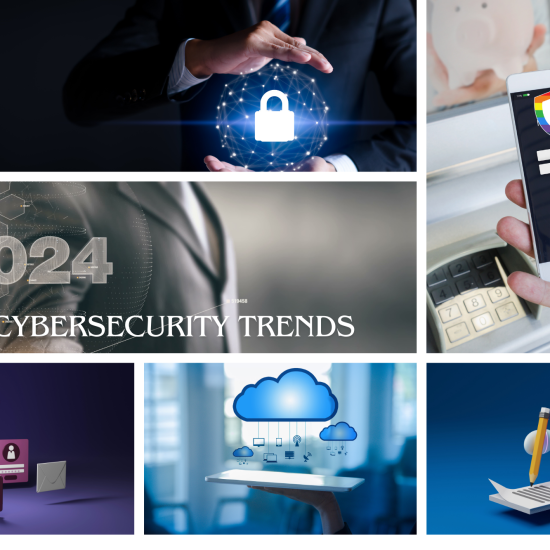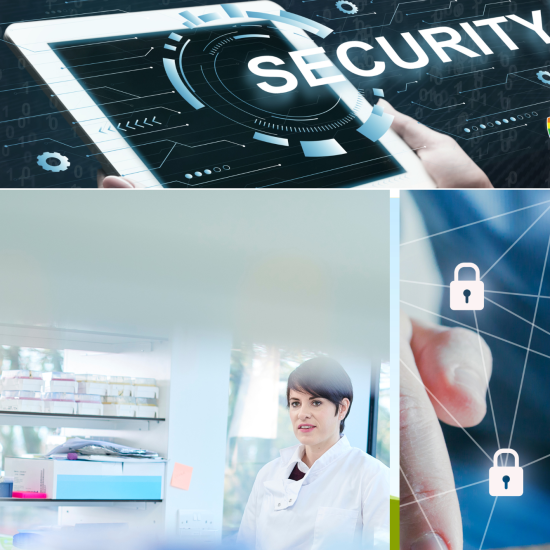Exploring as to why an integrated approach to GRC and Cybersecurity is critical?
As businesses continue to rely increasingly on technology, cybersecurity has become the primary defense against cyber-attacks. However, Governance, Risk, and Compliance (GRC) are just as important.
Cybersecurity aims to protect technical aspects such as systems, networks, and data. In contrast, GRC serves as a communication tool for the entire organization. By utilizing GRC tools, companies can establish effective practices and governance to ensure everyone is aware of risks, how to minimize them, and how they can impact the company’s success.
Furthermore, GRC is a medium for educating and promoting cybersecurity best practices, reducing risks, and achieving business objectives. Hybrid work models, cloud services, and technology’s evolution have presented new risks and challenges, making cybersecurity a critical component for organizations and necessary for long-term success.
In this article, you will read about:
Understanding GRC: Governance, Risk, and Compliance
The OCEG’s Open-Source Capability Model for GRC
Understanding the connection between GRC and Cybersecurity
Exploring the Technical Advantages of GRC in Cybersecurity
Why an Integrated Approach to GRC and Cybersecurity is Critical?
How can Rainbow Secure help?
Understanding GRC: Governance, Risk, and Compliance
Governance, Risk, and Compliance (GRC) is an all-encompassing strategy that covers an organization’s governance, enterprise risk management, and regulatory compliance.
Governance
Governance within an organization ensures that policies and process structures are implemented in a consistent manner that can be monitored and aligns with the organization’s strategic goals. The main components of good governance include:
- Corporate Management
- Strategy Management
- Policy Management
Risk Management
Risk management includes developing processes for identifying and managing risks according to organizational guidelines. This includes several main components of risk:
- Identifying potential risks
- Assessing risks
- Managing risks
- Mitigating risks
- Retaining risks
- Monitoring risks
- Reporting on risks
Compliance
Compliance includes implementing security measures and protocols, both internally and externally, to ensure compliance with established standards. It also involves aligning and adhering to applicable regulations, codes of conduct, and expectations. Overall, it is a way for an organization to pursue demonstrable integrity, trust, and legal compliance.
The OCEG’s Open-Source Capability Model for GRC
The OCEG has created an innovative open-source methodology, the Capability Model (Red Book), which consolidates governance, risk, compliance, audit, culture/ethics, and IT sub-disciplines into a singular approach. This model can be modified to suit specific requirements, from individual projects to full organization-wide implementations, such as anti-corruption initiatives, business continuity, and third-party management.
The GRC Capability Model is crucial in framing discussions about GRC abilities with senior executives, managers, and board members. Organizations can also use it in tandem with more specialized functional frameworks like ISACA, COSO, NIST, ISO, IIA, and others.
The Capability Model is designed to:
- Standardize practices, such as policies and training.
- Define common components and elements.
- Unify vocabulary across disciplines.
- Identify communication for everyone involved.
- Define common information requirements.
The purpose of this model is to establish a constant and comprehensive improvement process to achieve optimal performance and create value for the organization.
Understanding the connection between GRC and cybersecurity
When talking about cybersecurity, Governance, Risk, and Compliance (GRC) is often considered the least exciting part of business protection. However, its importance can’t be ignored, and this is why.
While cybersecurity focuses on the technical side of protecting systems, networks, devices, and data, GRC is the tool that will help the entire organization understand and communicate how to do it.
In simple words, GRC is the medium for creating awareness around cybersecurity’s best practices to reduce risks and achieve business goals.
GRC, or governance, risk management, and compliance, is a strategic framework that aligns an organization’s IT with its business goals through effective risk management and compliance with regulations. With IT GRC, this governance, risk management, and compliance strategy is extended to technology and cybersecurity. This approach ensures that cyber risk is no longer separated from financial or other risks faced by a company. Moreover, GRC provides a centralized approach to all compliance needs, including data privacy compliance.
The benefits of GRC are numerous. It aligns IT with the overall objectives of an organization, allowing for quick decisions about cyber risks. This approach also prevents siloing when it comes to risk, ensuring that all IT risk, compliance, and governance functions are incorporated into one cohesive strategy.
Ultimately, an IT GRC strategy is essential for any company that wants to streamline its IT risk, compliance, and governance functions into a single, comprehensive approach.
From a cybersecurity standpoint, GRC is a structured approach to aligning IT with business objectives while effectively managing risks and meeting regulatory needs. To achieve business objectives and maximize the company’s bottom line, organizations need to follow best practices and procedures. This is why GRC exists, to mitigate any threat to productivity and the company’s value by creating standards, policies, regulations, and processes.
Most importantly, GRC helps build trust in the organization by improving efficiencies, enhancing communication, increasing employees’ confidence to share information, and achieving better business outcomes. Creating a culture of value empowers everyone within the organization, giving them the education and agency to understand how they can protect the business’s value, reputation and make better decisions.
In conclusion, while cybersecurity is often seen as the first line of defense, the importance of GRC in business protection cannot be overstated.
Organizations must align people, systems, and technologies with business objectives to achieve solid and effective cybersecurity. This means everyone should know and take the proper actions when executing their tasks — it’s all about awareness and knowledge.
Governance, Risk, and Compliance is the best tool to create an integrated system that focuses on achieving objectives while addressing risks and acting with integrity.
GRC is crucial because it supports cybersecurity with vital business activities, such as:
- Standardizing the best practices for everyone to act with integrity and security.
- Assigns roles and responsibilities to business units and users, enhancing communication.
- Helping with the implementation of data manipulation procedures.
- Unifies vocabulary across departments and teams.
- Supporting internal audits and encouraging continuous control monitoring.
- Assisting with risk mitigation internally and externally
- Supporting meeting industry and government regulations.
GRC also provides a framework to integrate security and privacy with the organization’s overall goals. Why is this important? Because it allows businesses to make informed decisions regarding data security risks quickly while mitigating the risk of compromising privacy.
Exploring the Technical Advantages of GRC in Cybersecurity
Are you considering implementing GRC to bolster your organization’s cybersecurity? Here are some of the key benefits you can expect:
- Third-party Vendor Selection: With GRC, IT and security teams can create vendor assessments and mitigation strategies. By gathering information such as corporate reputation, financials, and network security history, robust GRC models can help organizations select and vet potential third-party vendors.
- Risk Mitigation: GRC can help IT teams document the strengths and limitations of the current security program, understand the scope of cybersecurity, outline and act on different types of threats, and develop mitigation plans and risk treatments.
- Regulatory Compliance: Keeping up with evolving regulations globally is vital, and GRC can help by bringing these changes to the attention of security teams ahead of time. It can also help develop and manage policies, regulations, and standards to meet business and industry requirements.
- Audit Support: Organizations can provide proof and audit material for auditors by ensuring processes and best practices are well-documented. GRC can help craft and maintain a single source of truth for compliance, including incident response, cybersecurity compliance reviews, and internal control test results.
- Data Privacy: With the ever-changing landscape of privacy regulations, GRC can ensure that the appropriate protection, logging, and geographic storage are in place to defend customers’ and employees’ data.
- Visibility: GRC’s integrated approach provides visibility into every aspect of security compliance programs, enabling different units, managers, and personnel to make informed decisions based on data.
Why an Integrated Approach to GRC and Cybersecurity is Critical?
In today’s business landscape, a long-term, successful security strategy needs to integrate GRC and cybersecurity. An integrated approach offers several benefits, including faster communication, congruent metrics, and better decision-making. Additionally, it reduces costs and saves time, allowing organizations to focus on creating value for the business.
An integrated approach also helps organizations minimize manual input and the potential for human error. This, in turn, helps business directors visualize the organization’s security posture more effectively. By understanding the cross-functional posture, directors can better communicate with customers and empower employees, building trust and bolstering the company’s reputation.
In summary, GRC and cybersecurity work in tandem towards a lower-risk future and value creation – they cannot exist without each other. While cybersecurity aims to protect systems, networks, and data from a technical perspective, GRC communicates the best methods and practices to achieve this.
Adopting an integrated approach to GRC and cybersecurity can lead to:
- Increased efficiencies
- Enhanced security posture
- Improved visibility across the board
- Better security stories
- Increased support from leadership
- Avoidance of compliance/regulatory fines
- Setting the tone for the entire company
How can Rainbow Secure help?
Right amount of data and system access to right person or role at right time is the key to organizations being able to use digital tools and platforms to serve the customer base and stay compliant.
Next Generation Rainbow Secure platform is a modern identity authentication (MFA) and single sign- on (SSO) solution for your business across on-premises and cloud environments. It’s backed by an experienced team of cloud and security experts, years of innovation, and partnerships with leading cloud platforms. Rainbow Secure is a Leader in Smart and Secure Digital Solutions that work for you.
Insider Threats: Rainbow Secure assists in mitigating insider threats by implementing access controls, user monitoring, and privilege management solutions. Also, if the user leaves behind unlocked devices, saved passwords in the password manager or browser can be misused by malicious insiders. Interactive login security from Rainbow Secure helps prevents unauthorized access and protects against data theft or misuse by privileged users.
ChatGPT Security for business: Secure your ChatGPT login and Data with Rainbow Secure MFA Plugin.
Secure AI Integration: Consult Rainbow Secure Team to integrate AI in your business workflows powered by Azure and Rainbow Secure API.
Secure Workforce & Customer login: Use Authentication Plug-in by Rainbow Secure to secure workforce and customer logins. In this plug-in, you get a multi-dimensional password, passwordless login solutions with AI monitoring, Risk Analytics, and location fencing.
IoT Friendly Security: IoT platform developers can secure their cloud endpoints, and user logins (both admin and customer) against unauthorized access and scripted malware attacks using easy to adapt and support multi-layer interactive rainbow secure authentication solutions and services that includes but not limited to security assessment, API Security, secure user onboarding, and risk analytics.
Secure Data and its Backups We provide Cloud based data vault and data archive solutions backed by Microsoft Azure and secured by our authentication plugin and industry best practices to give you ransomware protection, help with data governance and disaster mitigation.
Database Security We provide technical consulting services to Secure Databases in cloud and on premise. You get best protection for your data in databases using native and third-party security tools.
Meet Compliance Requirements: Use Authentication Plug-in by Rainbow Secure with your business application and in SSO (Single Sign-on) and meet industry standards and compliance regulations such as NIST, ISO, FTC, SOX, SOC2, CMMC, CMMI, HIPAA, PCI, and others.
Securely communicate and Collaborate: Use Secure Business Email by Rainbow Secure and get protection against account takeover, phishing, ransomware, and automated login cyber frauds. In this email, you get options to send encrypted emails, single sign-on with Office 365, and Google, and 1 TB one drive storage.
Connect Business applications: Get one unified login using Rainbow Secure Single Sign-On
Manage User Onboarding / Offboarding using Rainbow Secure IAM
Verify User using Smart Multi-factor MFA. Smart Multi-Factor Authentication from Rainbow Secure which adjusts to your use case, reduces the cyber liabilities of a business from stolen credentials and improves productivity, and enhances user experience.
Do you have more questions about how Rainbow Secure’s innovative modern identity authentication (MFA) and single sign- on (SSO) solutions safeguard your business and enhance user productivity for your business across on-premises and cloud environments? Contact us today. Email us at Hello@rainbowsecure.com







